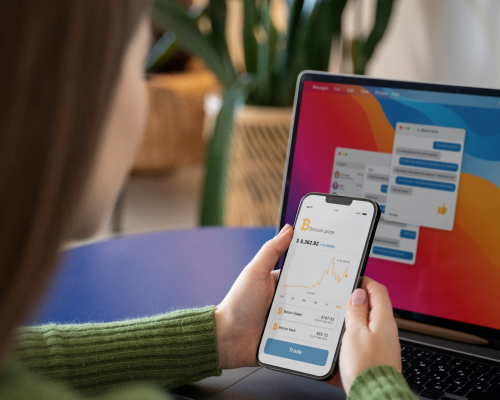
Unleashing Speed and Efficiency: Performance Optimization Techniques for Websites and Mobile Apps

Introduction
In today’s fast-paced digital landscape, performance optimization plays a crucial role in providing a seamless user experience. Slow-loading websites and sluggish mobile apps can frustrate users and lead to high bounce rates. In this article, we will explore essential tips and techniques for optimizing the performance of websites and mobile apps. By implementing these strategies, businesses can enhance speed, efficiency, and user satisfaction.
Code Optimization: Streamlining for Speed
Efficient code plays a vital role in enhancing website and mobile app performance. By following best practices such as minification, which removes unnecessary characters and spaces, and concatenation, which combines multiple files into one, you can reduce file sizes and minimize loading times. Additionally, optimizing database queries, using efficient algorithms, and avoiding excessive use of JavaScript can significantly improve performance.
Image Compression: Striking a Balance Between Quality and Speed
Images are often a major contributor to slow-loading websites and apps. Optimizing images through compression techniques without compromising quality is crucial. Consider using image formats like JPEG or WebP for photographs and PNG for graphics with transparency. Tools and libraries are available to automate image compression and resizing, ensuring optimal file sizes and faster load times.
Caching Strategies: Exploiting the Power of Browser Caching
Leveraging browser caching can dramatically improve performance by storing static resources locally on users’ devices. Implementing cache control headers and setting appropriate expiration times for static files such as CSS, JavaScript, and images enables browsers to retrieve and load these resources from the cache, eliminating the need for repeated requests to the server. This reduces bandwidth usage and speeds up subsequent visits.
Server-Side Optimizations: Boosting Backend Efficiency
Server-side optimizations focus on improving the performance of the backend infrastructure supporting websites and mobile apps. Techniques such as database query optimization, efficient use of caching mechanisms like Redis or Memcached, and adopting a content delivery network (CDN) can enhance response times and reduce server load. Implementing server-side compression and enabling HTTP/2 and GZIP compression can also improve data transfer efficiency.
Performance Monitoring and Testing: Continuous Improvement
Regularly monitoring and testing the performance of websites and mobile apps is essential for ongoing optimization. Performance monitoring tools and services can help identify bottlenecks, analyze server response times, and track key performance metrics. Load testing and stress testing allow you to simulate high traffic scenarios and identify potential performance issues before they impact users. By proactively monitoring and testing, you can continually fine-tune performance and ensure optimal user experiences.
Conclusion
Optimizing the performance of websites and mobile apps is crucial for delivering fast, efficient, and enjoyable user experiences. By implementing code optimization techniques, compressing images, leveraging caching strategies, and optimizing server-side components, businesses can enhance speed, reduce load times, and increase user satisfaction. Remember to continuously monitor and test performance to identify areas for improvement. Prioritizing performance optimization not only improves user experiences but also contributes to higher conversion rates, better search engine rankings, and a competitive edge in the digital landscape. By investing time and effort into performance optimization, businesses can unleash the true potential of their websites and mobile apps, delivering exceptional performance that keeps users coming back for more.


